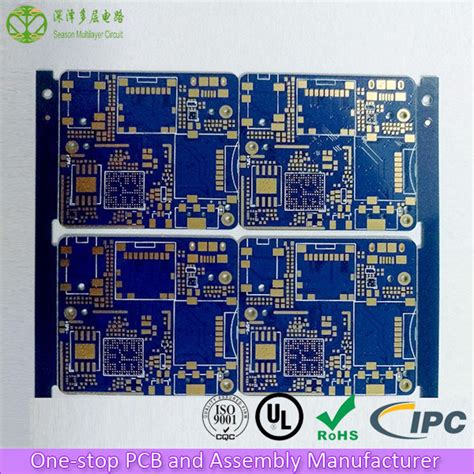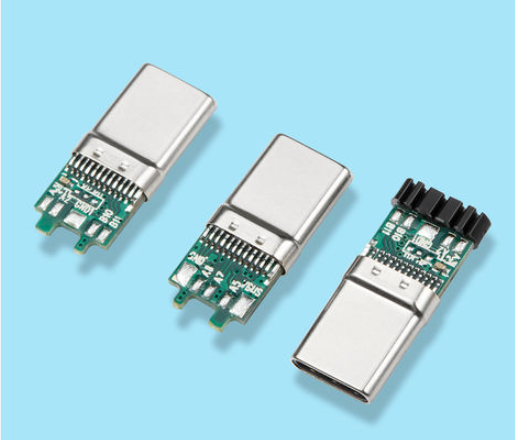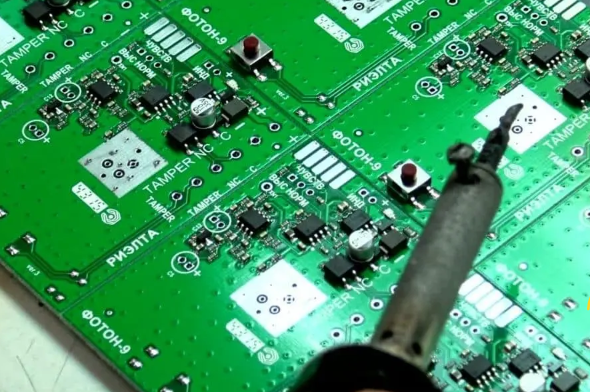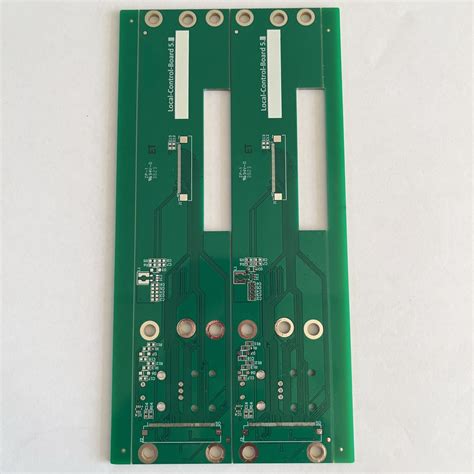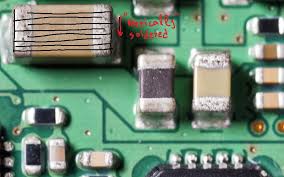Unlocking Innovation: The Essential Guide to 4 Layer PCB Prototypes
Key Takeaways
When delving into 4 layer PCB prototypes, it’s essential to recognize how they stand out in the realm of pcb manufacturing. By utilizing four layers, these prototypes allow for increased complexity without compromising space, enhancing both functionality and efficiency. The design process benefits significantly; for instance, you can integrate various components more effectively, which can reduce the overall pcb manufacturing cost. Engaging with reputable pcb manufacturing companies is crucial as they not only provide high-quality materials but also offer insights on achieving optimal design and layout, leading to more reliable prototypes. In your projects, leveraging these advantages can markedly enhance innovation and performance while ensuring that your pcb manufacturing business stands out in a competitive market. Understanding these key elements prepares you to tackle your next project with confidence and creativity, ultimately unlocking the full potential of your designs.
Introduction to 4 Layer PCB Prototypes: A New Era of Design
As technology advances, the demand for more sophisticated printed circuit boards (PCBs) grows. A 4 layer PCB prototype represents an essential innovation, offering improved electrical performance and design flexibility. When you consider entering the realm of pcb manufacturing, understanding these prototypes is crucial.
In this new era of design, a 4 layer PCB enables you to pack more functionality into a compact space, while managing the complexities of routing signals and power distribution effectively. This complexity leads to increased performance and can significantly lower the overall pcb manufacturing cost compared to traditional multilayer designs.
To maximize the benefits of your prototypes, partnering with reputable pcb manufacturing companies can make all the difference. These companies offer expertise that helps you navigate challenges unique to 4 layer designs. You’ll find that their insights into material selection and layout optimization are invaluable when refining your prototype.
“Incorporating advanced technology in your PCB designs is not just beneficial; it’s essential for keeping pace with market demands.”
Moreover, it’s important to understand how the innovations in manufacturing processes affect your projects. Consider factors like soldering techniques and material compatibility in light of the increasing complexities in electronics. Utilizing effective design tools can streamline your workflow, ensuring that you make informed decisions throughout your pcb manufacturing business journey.
Here’s a quick overview table summarizing key aspects related to 4 layer PCBs:
| Aspect | Impact |
|---|---|
| Complexity | Supports intricate routing |
| Performance | Enhances signal integrity |
| Manufacturing Cost | Potentially lower than multilayer options |
| Design Flexibility | Allows for compact layouts |
Embrace this opportunity to unlock innovative solutions as you delve into the world of 4 layer PCBs. By concentrating on effective design and understanding the manufacturing processes, you’re laying a sturdy foundation for successful project outcomes. To explore further resources on this subject, check Andwin PCB.
Key Advantages of Using 4 Layer PCB Prototypes
When exploring 4 layer PCB prototypes, you’ll find that they offer significant advantages that can transform your projects. First and foremost, the design flexibility they provide allows you to integrate more complex circuits in a compact manner. With four layers, you can effectively manage signal integrity and minimize electromagnetic interference, ensuring your device operates smoothly in various environments.
Additionally, these prototypes enhance thermal performance, which is essential in high-power applications where heat dissipation is a concern. Utilizing 4 layer PCBs can also increase the overall efficiency of your design, resulting in a smaller footprint without compromising functionality. This means fewer layers of circuits often translate to lower PCB manufacturing costs, making them a cost-effective solution for many developers.
When engaging with various PCB manufacturing companies, it’s crucial to recognize that 4 layer PCBs often speed up the prototyping phase. This acceleration can lead to faster product launches, giving you an edge in the competitive market. As you consider initiating a PCB manufacturing business or refining your existing process, leveraging 4 layer prototypes could be a game changer in achieving innovative solutions and enhancing project performance. The investment in such prototypes may very well yield substantial returns as efficiency and complexity continue to evolve in electronics design.
Understanding the Manufacturing Process for 4 Layer PCBs
When it comes to 4 layer PCB prototypes, understanding the manufacturing process is essential for achieving high-quality results. The process typically begins with design—employing specialized software to create the layout that meets your project specifications. Once you have your design, you must select a reliable PCB manufacturing company that can deliver on your requirements. This step is crucial, as different companies may offer varying levels of service, expertise, and cost-effectiveness.
The actual PCB manufacturing involves several key stages, including material selection, etching, and lamination. The choice of materials directly impacts the performance and reliability of your final product. For a 4 layer PCB, each layer is carefully developed using copper-clad laminates, which must be precisely aligned during assembly to ensure signal integrity. It’s also important to consider PCB manufacturing costs, as these can vary significantly depending on complexity and volume.
In addition to choosing the right PCB manufacturing business, monitoring quality assurance during production will enhance project outcomes. As you navigate this complex landscape, remember that effective communication with manufacturers may also optimize both timing and performance, ultimately unlocking greater innovation in your designs.
Design Considerations for Effective 4 Layer PCB Prototypes
When approaching 4 layer PCB prototypes, it’s essential to consider several key factors that can significantly impact the success of your design and its effectiveness in your projects. The design layout is crucial; ensure that your components are arranged to minimize signal interference while maintaining a clear path for power distribution. Additionally, you should prioritize the choice of materials, as different substrates can influence the overall performance and reliability of the board. Pay attention to the pcb manufacturing process as well, since various pcb manufacturing companies offer differing capabilities and technologies.
Choosing a reliable pcb manufacturing business can also affect your overall project timeline and cost. Balancing the pcb manufacturing cost with quality is vital; therefore, prior research into potential manufacturers will assist you in making informed decisions. Utilize techniques such as impedance control and ground planes effectively in your design to ensure signal integrity, which is particularly critical in high-frequency applications. By integrating these considerations into your planning phase, you not only enhance the prototype’s functionality but also set a strong foundation for subsequent production runs. This strategic approach will ultimately lead to more innovative products that can stand out in today’s competitive market landscape.
Enhancing Project Performance with 4 Layer PCBs
Utilizing 4 layer PCB prototypes can significantly enhance the performance of your electronic projects. One of the primary benefits is their ability to support complex designs while minimizing space requirements. With an extra layer compared to 2 layer PCBs, you can achieve denser interconnections that are essential for advanced functionalities. This increased layer count allows for better signal integrity, which is crucial in high-frequency applications.
Moreover, partnering with reputable PCB manufacturing companies can streamline the transition from design to production. These companies often utilize advanced pcb manufacturing techniques that ensure high precision and reliability in the final product. Understanding the pcb manufacturing cost is vital; however, the investment typically pays off through improved performance and better thermal management in your devices. Incorporating a 4 layer prototype may initially seem like a higher investment in your pcb manufacturing business, but it ultimately leads to innovations that differentiate your projects in a competitive market. By carefully considering these aspects, you unlock new potentials for your designs and push the boundaries of what’s possible in electronics.
Common Applications for 4 Layer PCB Prototypes
The versatility of 4 layer PCB prototypes makes them ideal for a wide range of applications in today’s technologically advanced landscape. You will find these prototypes extensively used in consumer electronics, automotive systems, telecommunications, and industrial machinery. The pcb manufacturing industry has embraced the demand for compact and efficient designs, leading to the increased use of 4 layer PCBs in devices requiring miniaturization without compromising performance. For instance, in the realm of telecommunications, these prototypes provide improved signal integrity and reduced electromagnetic interference, critical for maintaining optimal communication standards. Additionally, in consumer electronics like smartphones and smart home devices, the compact design of 4 layer PCBs allows manufacturers to streamline their products while enhancing functionality. When selecting pcb manufacturing companies, your project can benefit from the advanced features that these prototypes offer at a competitive pcb manufacturing cost. The capabilities of 4 layer PCBs play a significant role in enabling innovative solutions that meet the demanding requirements of modern applications while supporting your growing pcb manufacturing business ambitions. Thus, understanding where and how to effectively implement 4-layer designs can significantly elevate your project’s potential and application scope.
Troubleshooting Challenges in 4 Layer PCB Development
When navigating the pcb manufacturing landscape, especially with complex 4 layer PCB prototypes, you may encounter several challenges that require strategic troubleshooting. One common issue relates to the layer alignment. Misalignment of layers during the pcb manufacturing process can lead to significant electrical failures. To alleviate this, ensuring precise registration and utilizing advanced alignment techniques are paramount. Another challenge involves signal integrity; with more layers, crosstalk and interference become critical concerns that necessitate careful planning and simulation. Engaging with reputed pcb manufacturing companies can provide insights on effective solutions tailored for your specific design challenges. It’s also essential to consider the pcb manufacturing cost, as intricate designs may drive expenses higher than anticipated. Balancing performance needs and cost-effectiveness is vital for maintaining a successful pcb manufacturing business. Thus, focusing on these troubleshooting aspects will enhance your development process and ensure that your 4 layer PCB prototypes meet expected performance standards while minimizing potential pitfalls.
Future Trends in 4 Layer PCB Technology
As technology continues to evolve, the landscape of 4 layer PCB prototypes is also set to undergo significant transformations. One of the most notable trends is the increasing demand for integration with advanced manufacturing capabilities, particularly within pcb manufacturing. You’ll find that pcb manufacturing companies are now investing heavily in automation and smart manufacturing processes to boost efficiency and reduce the pcb manufacturing cost. This shift is essential as you look to develop complex designs that require more functionalities in smaller form factors. Another critical trend is the move towards environmentally friendly materials and processes, which enhances sustainability within your projects while addressing industry regulations. This push not only lowers your environmental impact but also influences how pcb manufacturing business models are evolving. As you keep an eye on these trends, consider how they can positively impact your design choices and project outcomes. By leveraging the latest advancements in 4 layer PCB technology, you can stay ahead of competitors while unlocking new levels of performance and innovation in your applications.
Conclusion
In summary, pursuing a 4 layer PCB prototype can significantly elevate your design projects by leveraging advanced pcb manufacturing techniques. Understanding the nuances of pcb manufacturing companies helps you identify the right partner for your needs, which can streamline your project timelines and reduce production costs. As you dive deeper into the pcb manufacturing cost, you’ll find that investing in high-quality materials and skilled labor often leads to superior performance and durability in your prototypes. With a well-established pcb manufacturing business, you can ensure that efficiency and innovation are at the forefront of your design strategy, paving the way for future advancements in technology. Embracing 4 layer PCB prototypes not only enhances your current projects but also sets a strong foundation for exploring new avenues in electronics development. Ultimately, making informed choices in this realm can unlock unprecedented potential for both individual projects and broader industry trends.
FAQs
What is a 4 layer PCB prototype?
A 4 layer PCB prototype is a printed circuit board that consists of four conductive layers. This design allows for more complex circuits, increased density, and better performance compared to single and double-layer PCBs.
What are the key benefits of using 4 layer PCB prototypes?
Utilizing 4 layer PCBs offers several advantages such as improved signal integrity, reduced electromagnetic interference, and efficient space utilization. This leads to greater flexibility in design and can ultimately enhance your project’s capabilities.
How does the pcb manufacturing process work for 4 layer prototypes?
The pcb manufacturing process begins with generating a design file, followed by layering copper and insulation materials through processes like lamination and etching. This enables precise routing of connections across all layers.
What should I consider in the design phase of a 4 layer PCB prototype?
When designing your prototype, consider factors such as layer stacking, signal paths, power distribution, and thermal management. These elements play a crucial role in ensuring optimal performance within your pcb manufacturing business.
What are typical applications for 4 layer PCBs?
Common applications include consumer electronics, telecommunications equipment, automotive devices, and medical instrumentation. These sectors benefit from the advanced capabilities that 4 layer PCB prototypes provide.
Is there a notable difference in cost between 2-layer and 4-layer PCBs?
Yes, generally speaking, the pcb manufacturing cost increases with additional layers due to more complex designs and materials needed. However, the enhanced capabilities often justify the investment for many projects.
For further information on optimizing your designs or seeking solutions in pcb manufacturing, please click here: AndwinPCB Manufacturing.

